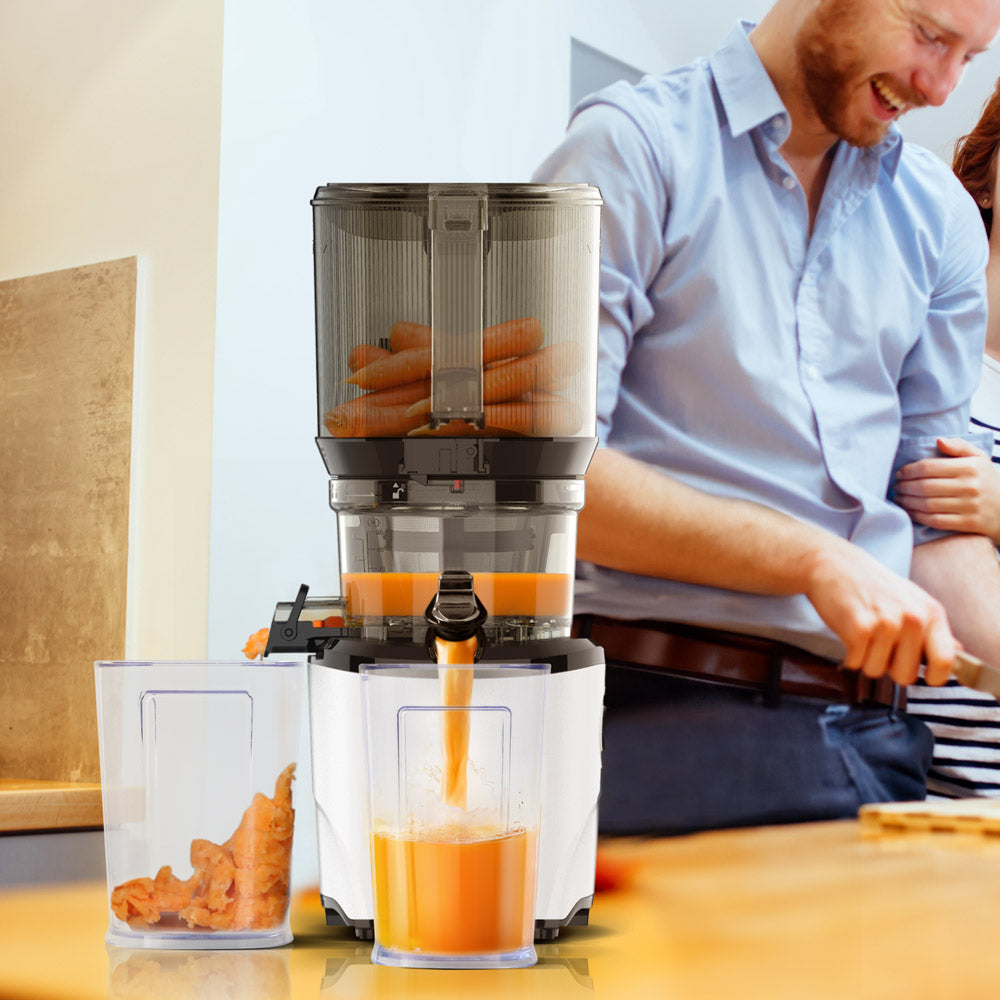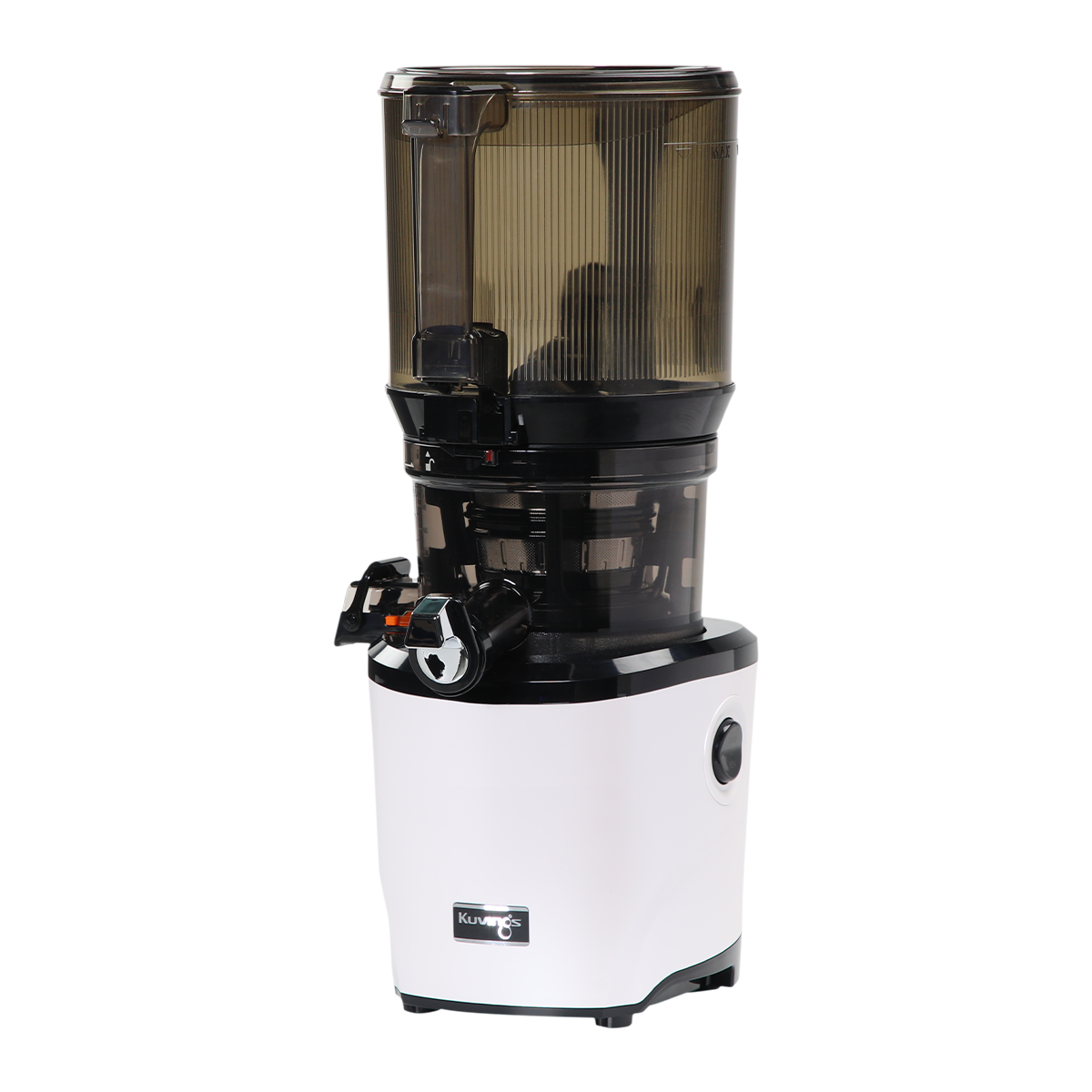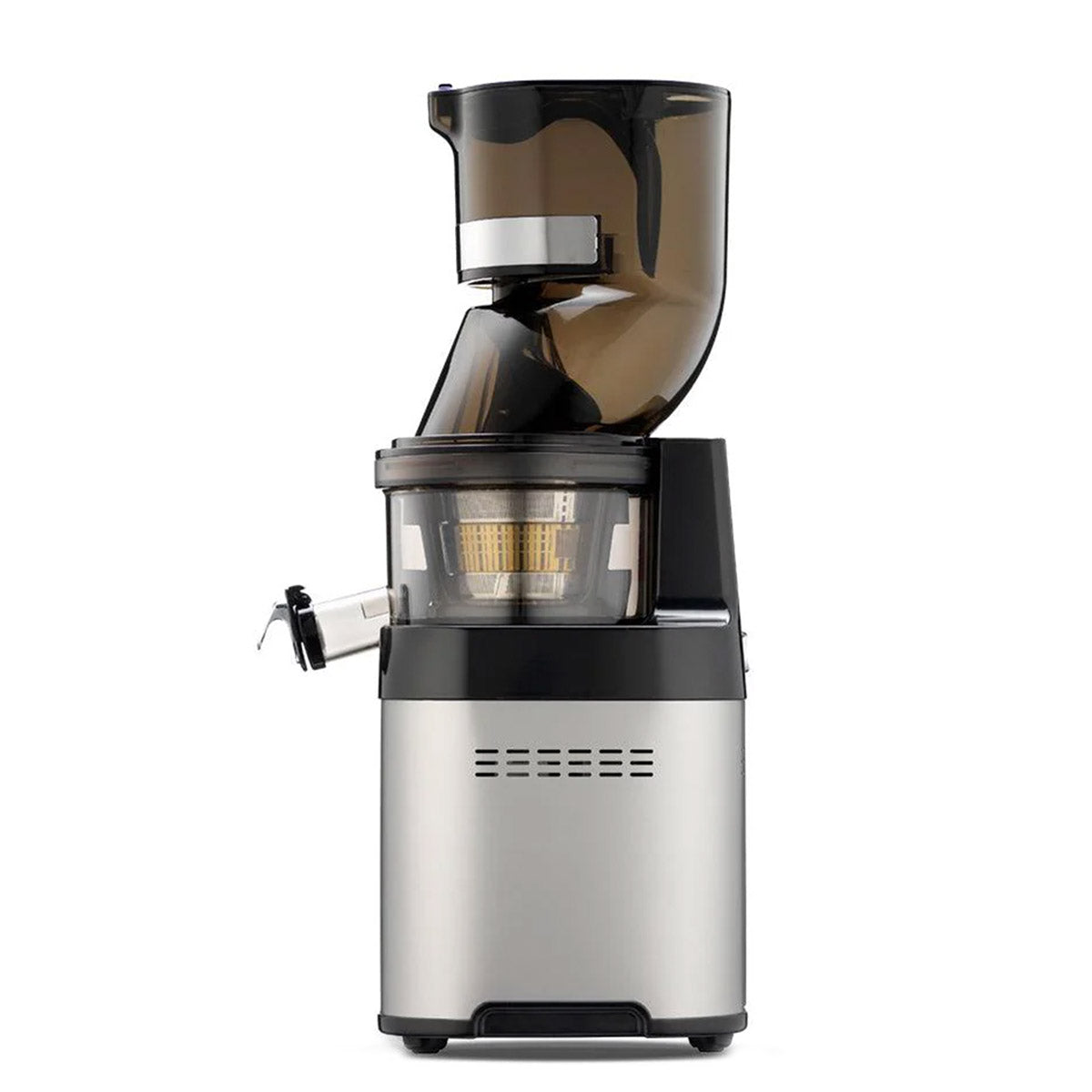A healthy diet should comprise of 5 parts of fruits and vegetables. While juicing is an effective way to increase the consumption of fruits and vegetables, some people practice juice cleanses (also known as juice fasts) that can last up to 10 or more days.
The juice cleanse movement has strong support with celebrities and influencers taking to their social media platforms to credit their cold press juicer for anti-aging, glowing skin, weight loss success and high energy levels.
A juice cleanse is a diet that replaces all solid food consumption with fruit and vegetable juices, as a method of detoxing or alternative medicine. This can be harmful if taken to the extreme.
To ensure that you practice juicing safely, here are 7 don’ts of juicing and the correct measures you should be taking instead.
1. Don’t replace all of your meals with juicing permanently
Our main sources of energy are carbohydrates, fats and protein. Despite being heavy in carbohydrates, consuming a fruits-only juice is an inadequate meal if it is not paired with proteins and other nutrients. Similarly, consuming a vegetables-only juice is also inadequate as it lacks other essential nutrients.
Since juice cleanses completely replace meals, one of the most obvious benefits is weight loss. However, it must be practiced in moderation and with the guidance of a qualified dietician or nutritionist.
2. Don’t just juice fruits
Sweet fruits are high in fructose and sugar levels and can result in weight gain which is important to consider when juicing for pre-diabetics or diabetics. Instead of using sweet fruits as the main ingredient, use them minimally just to make it palatable. Alternatively, you can use leafy vegetables such as Romaine lettuce, spinach, kai lan, bok choy or bayam and add lemon or lime to make it flavourful. When adding more vegetables in the recipe, you must carefully select the best juicer for you as specific juicer types are more efficient for juicing leafy greens and / or thicker vegetables.
3. Don’t speed drink
Most households are in a frenzy in the morning which also happens to be the most advisable time to consume juices. As a result, people tend to rush themselves while drinking their juice. Avoid doing this as it can shock an empty stomach and have adverse effects on the digestive enzymes.
Instead, relax your state of mind and be seated while drinking the juice to ease the stomach into receiving natural goodness. Imagine yourself slowly chewing a mouthful of fruits and vegetables. This action increases saliva production which aids the absorption of nutrients and eases digestion.
4. Don’t store the juice for too long
Juicing requires dedication and while it may seem more convenient to ‘juice prep’ in advance, it isn’t advisable to store fresh juices for lengthy periods of time. Light and air will destroy the nutrients and natural antioxidants; losing the potency and freshness of the juice. This is especially true if you are using a centrifugal juicer.
If you use a high quality cold press juicer such as Kuvings, you may store juices in an airtight container and keep it refrigerated for up to 72 hours with minimal loss of nutrients.
5. Don’t be careless about the produce you juice
Raw produce are most likely to contain pesticides and / or be genetically modified which may cause harm to your body as you digest the chemicals.
As a healthier and safer option, shop for organic produce which is clean and non-contaminated. Alternatively, if shopping organically exceeds your budget, soak the produce in water, apple cider vinegar and baking powder for 15 - 30 minutes to remove any pesticide coating / residue.
6. Don’t ignore your dental hygiene
Fruits have a high concentration of fructose that can cause tooth cavities when not properly taken care of.
Dentists recommend drinking water after a glass of juice to neutralize any acidity levels in your mouth and avoid gradually sipping the juice throughout the day.
7. Don’t be wasteful
The juice pulp collected from a fruit juice machine is high in fiber and can be repurposed as fertiliser or even used to make other healthy foods such as pesto, hummus, smoothies and snacks for pets.
Instead of throwing the pulp away, get creative and make your own homemade dips, sauces and snacks; fresher than store bought products and without all of the preservatives!
Kuvings believes in the total well-being of our customers. Practice safe juicing and be part of the movement. With Kuvings, you will receive the full support of our dieticians and the Kuvings Malaysia community on your journey to becoming the best version of you. Watch true and inspiring stories of Kuvings users who live a Happier and Healthier lifestyle with Kuvings here.
The juice cleanse movement has strong support with celebrities and influencers taking to their social media platforms to credit their cold press juicer for anti-aging, glowing skin, weight loss success and high energy levels.
A juice cleanse is a diet that replaces all solid food consumption with fruit and vegetable juices, as a method of detoxing or alternative medicine. This can be harmful if taken to the extreme.
To ensure that you practice juicing safely, here are 7 don’ts of juicing and the correct measures you should be taking instead.
1. Don’t replace all of your meals with juicing permanently
Our main sources of energy are carbohydrates, fats and protein. Despite being heavy in carbohydrates, consuming a fruits-only juice is an inadequate meal if it is not paired with proteins and other nutrients. Similarly, consuming a vegetables-only juice is also inadequate as it lacks other essential nutrients.
Since juice cleanses completely replace meals, one of the most obvious benefits is weight loss. However, it must be practiced in moderation and with the guidance of a qualified dietician or nutritionist.
“Yes, it is possible to consume the full array of nutrients through a juice cleanse if you know what ingredients to use,” says Naim Azhari, Dietician from Kuvings Malaysia.
2. Don’t just juice fruits
Sweet fruits are high in fructose and sugar levels and can result in weight gain which is important to consider when juicing for pre-diabetics or diabetics. Instead of using sweet fruits as the main ingredient, use them minimally just to make it palatable. Alternatively, you can use leafy vegetables such as Romaine lettuce, spinach, kai lan, bok choy or bayam and add lemon or lime to make it flavourful. When adding more vegetables in the recipe, you must carefully select the best juicer for you as specific juicer types are more efficient for juicing leafy greens and / or thicker vegetables.
3. Don’t speed drink
Most households are in a frenzy in the morning which also happens to be the most advisable time to consume juices. As a result, people tend to rush themselves while drinking their juice. Avoid doing this as it can shock an empty stomach and have adverse effects on the digestive enzymes.
Instead, relax your state of mind and be seated while drinking the juice to ease the stomach into receiving natural goodness. Imagine yourself slowly chewing a mouthful of fruits and vegetables. This action increases saliva production which aids the absorption of nutrients and eases digestion.
4. Don’t store the juice for too long
Juicing requires dedication and while it may seem more convenient to ‘juice prep’ in advance, it isn’t advisable to store fresh juices for lengthy periods of time. Light and air will destroy the nutrients and natural antioxidants; losing the potency and freshness of the juice. This is especially true if you are using a centrifugal juicer.
If you use a high quality cold press juicer such as Kuvings, you may store juices in an airtight container and keep it refrigerated for up to 72 hours with minimal loss of nutrients.
5. Don’t be careless about the produce you juice
Raw produce are most likely to contain pesticides and / or be genetically modified which may cause harm to your body as you digest the chemicals.
As a healthier and safer option, shop for organic produce which is clean and non-contaminated. Alternatively, if shopping organically exceeds your budget, soak the produce in water, apple cider vinegar and baking powder for 15 - 30 minutes to remove any pesticide coating / residue.
6. Don’t ignore your dental hygiene
Fruits have a high concentration of fructose that can cause tooth cavities when not properly taken care of.
Dentists recommend drinking water after a glass of juice to neutralize any acidity levels in your mouth and avoid gradually sipping the juice throughout the day.
7. Don’t be wasteful
The juice pulp collected from a fruit juice machine is high in fiber and can be repurposed as fertiliser or even used to make other healthy foods such as pesto, hummus, smoothies and snacks for pets.
Instead of throwing the pulp away, get creative and make your own homemade dips, sauces and snacks; fresher than store bought products and without all of the preservatives!
Kuvings believes in the total well-being of our customers. Practice safe juicing and be part of the movement. With Kuvings, you will receive the full support of our dieticians and the Kuvings Malaysia community on your journey to becoming the best version of you. Watch true and inspiring stories of Kuvings users who live a Happier and Healthier lifestyle with Kuvings here.























![[NEW] REVO830 Whole Slow Juicer "The Dark Knight" - Kuvings.my](http://kuvings.my/cdn/shop/files/REVO830_multi-function.webp?v=1766129082&width=1200)
![[NEW] REVO830 Whole Slow Juicer "The Dark Knight" - Kuvings.my](http://kuvings.my/cdn/shop/files/contents_compare_01_360x_677de4d1-1209-4ada-b8e3-d1445cee5e84.webp?crop=region&crop_height=360&crop_left=0&crop_top=0&crop_width=360&v=1766129082&width=360)
![[NEW] REVO830 Whole Slow Juicer "The Dark Knight" - Kuvings.my](http://kuvings.my/cdn/shop/files/cold-press-juice_00.jpg?v=1766129082&width=1200)
![[NEW] REVO830 Whole Slow Juicer "The Dark Knight" - Kuvings.my](http://kuvings.my/cdn/shop/files/sub_buying-guide_05_9f06c62f-683c-4247-8c93-efb0111660e5.jpg?crop=region&crop_height=920&crop_left=15&crop_top=0&crop_width=920&v=1766129082&width=950)
![[NEW] REVO830 Whole Slow Juicer "The Dark Knight" - Kuvings.my](http://kuvings.my/cdn/shop/files/IndyBest_banner.jpg?v=1766129082&width=1080)
![[NEW] REVO830 Whole Slow Juicer "The Dark Knight" - Kuvings.my](http://kuvings.my/cdn/shop/files/REVO830_1080x1080_773ec9d9-75c2-495e-b256-6d01ef58ba78.jpg?v=1766129082&width=1080)
![[NEW] REVO830 Whole Slow Juicer "The Dark Knight" - Kuvings.my](http://kuvings.my/cdn/shop/files/EVO820REVO830_1080x1080-_1.jpg?v=1766129082&width=1080)
![[NEW] REVO830 Whole Slow Juicer "The Dark Knight" - Kuvings.my](http://kuvings.my/cdn/shop/files/2022_revo-und-evo_02.jpg?v=1766129082&width=1000)
![[NEW] REVO830 Whole Slow Juicer "The Dark Knight" - Kuvings.my](http://kuvings.my/cdn/shop/files/REVO830_01_540x_636872b5-787d-48dc-a4f6-0d006b49a63f.webp?v=1766129082&width=540)
![[NEW] REVO830 Whole Slow Juicer "The Dark Knight" - Kuvings.my](http://kuvings.my/cdn/shop/files/shopping.webp?v=1766129082&width=600)
![[NEW] REVO830 Whole Slow Juicer "The Dark Knight" - Kuvings.my](http://kuvings.my/cdn/shop/files/2L9A7313-e1690867035583-700x751.jpg?crop=region&crop_height=700&crop_left=0&crop_top=0&crop_width=700&v=1766129082&width=700)
![[NEW] REVO830 Whole Slow Juicer "The Dark Knight" - Kuvings.my](http://kuvings.my/cdn/shop/files/kuvings-whole-slow-juicer-revo830-black-revo830b_main_kitchen_innovation_1667x_64f4e0fc-2684-4f8f-af3b-8aeb0a3cca04.webp?v=1766129082&width=1000)
![[NEW] REVO830 Whole Slow Juicer "The Dark Knight" - Kuvings.my](http://kuvings.my/cdn/shop/files/SNS-REVO830-Lifestyle-62-1-1-Revised0.jpg?v=1766129082&width=990)
![[NEW] REVO830 Whole Slow Juicer "The Dark Knight" - Kuvings.my](http://kuvings.my/cdn/shop/files/REVO830-wholeslowjuicer-coldpress3.webp?v=1766129082&width=900)
![[NEW] REVO830 Whole Slow Juicer "The Dark Knight" - Kuvings.my](http://kuvings.my/cdn/shop/files/3_bf54f2a4-1c87-4015-94d7-3b7e7de053f6.png?crop=region&crop_height=461&crop_left=0&crop_top=0&crop_width=461&v=1766129082&width=461)












